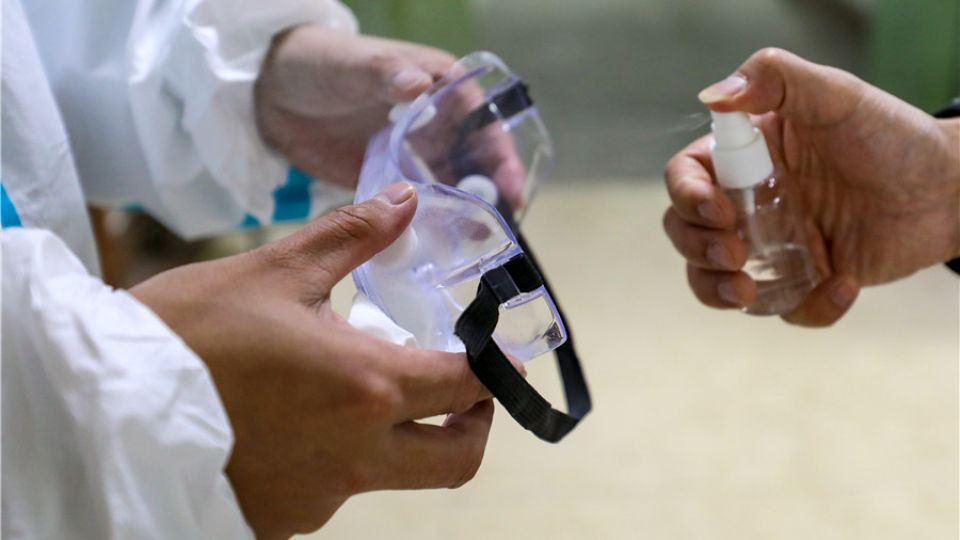March 9, 2020
COVID-19 is arguably the biggest risk to global growth since the Great Recession, S&P Global Platts Analytics said in a recent report. The rolling geographic nature of the virus’ spread means its duration could be extended into the second-quarter.
Oil prices have been in freefall since Jan. 20, when news of a dangerous, highly contagious coronavirus, COVID-19, first rattled markets. And there has been little respite since. The situation has in fact worsened and the demand destruction it is unleashing can be compared with the 2008-2009 global financial crisis.
Brent futures on ICE have come off by over 20 percent since Jan. 20 and are trading at just above US$50 per barrel.
COVID-19 is arguably the biggest risk to global growth since the Great Recession, S&P Global Platts Analytics said in a recent report. The rolling geographic nature of the virus’ spread means its duration could be extended into the second-quarter, it added.
COVID-19 brought back memories of the 2003 Severe Acute Respiratory Syndrome (SARS), a similar coronavirus, which wreaked havoc on several economies. Like SARS, COVID-19 too emerged out of China and has spread across the world, raising fears of a pandemic.
Though the new coronavirus has so far demonstrated a lower fatality rate than SARS, its economic impact is estimated to be far wider and deeper given the rise in China’s economic status in the last 17 years.
Greater interconnectedness and interdependence between countries also means that supply disruptions in China have a domino effect on manufacturing activity across the globe, which in turn translates into lower energy demand.
China’s oil demand has risen from 5.6 million barrels per day in 2003 to 14.7 million bpd in 2019, and it accounted for over 80 percent of global oil demand growth in 2019, according to data from Platts Analytics. The country imports over 10 million bpd of crude oil.
These statistics explain the devastation oil markets have faced in the last five weeks. Fewer motorists on the road, flight cancelations and industrial shutdowns mean lower demand for refined products. Platts Analytics estimates that Chinese oil demand dropped by over 3 million bpd in February.
Refineries in China have slashed operating rates by 20 percentage points as they face tank top situations, which translated into lower crude oil demand. It is no surprise that the number of tankers carrying crude oil for floating storage purposes has risen rapidly in the last few weeks.
Platts Analytics estimates that China’s oil demand will grow by only 170,000 bpd in 2020, 20 percent of its original estimate of 790,000 bpd.
Asia’s refined product demand growth, meanwhile, is expected to average 380,000 bpd in 2020, down from 780,000 bpd in 2019, posting its weakest growth since the global financial crisis of 2009.
Platts Analytics has also slashed its outlook for global oil demand growth to 860,000 bpd for 2020, from its previous estimate of 1.33 million bpd at the beginning of this year, marking its weakest growth rate since 2011.
“The demand outlook is expected to worsen as financial markets unravel, given acceleration of the coronavirus infection rate outside of China and the fear of its expansion,” Platts Analytics analyst Shin Kim said in a recent note.
It is against this backdrop that Organization of the Petroleum Exporting Countries (OPEC)+ are set to meet over March 5-6 in Vienna to discuss their production strategy for the coming months. The group was assessing if the meeting would pose a health hazard due to the virus’ spread in Europe, but at the time of writing, was still scheduled to proceed.
China is a key customer of the group’s largest producers. It buys 16 percent of Saudi’s crude and 14 percent of Russian output and these statistics will be on the top of the minds of Saudi Energy Minister Prince Abdulaziz bin Salman and Russian Energy Minister Alexander Novak when they discuss strategy this week.
A decision to delay the meeting would leave the future of the group’s 1.7 million bpd production cut accord with Russia and other allies up in the air. The deal expires at the end of the month, and with oil prices cratering, OPEC kingpin Saudi Arabia has been pressing the producer coalition to deepen the cuts by some 1 million bpd through at least June.
Somewhat offsetting the drop in demand is supply disruption in Libya and Venezuela.
Libya has lost close to 1 million bpd due to a blockade of its oil terminals and infrastructure and Platts Analytics does not see this supply returning to the markets until at least June.
Tighter sanctions against Venezuela, meanwhile, means that Indian and Chinese buyers will probably wind down purchases, which will further aggravate the output loss there. Platts Analytics sees risk to another 300,000-400,000 bpd of Venezuelan supply.
As the virus spreads globally, two things to watch out for are efforts to contain its spread and the speed with which China can return to business.
“At this point, we believe a weaker demand outlook will mostly be offset by greater supply losses in Libya, Venezuela, and likely deeper OPEC+ cuts for Q2 once it becomes clear the virus can be contained,” Kim said, adding that this should generally keep Brent in the mid- to low-$50s/b range for the next few weeks.
“But we recognize that until there is further clarity on the outbreak, fear could push Brent into the forties,” she added.


